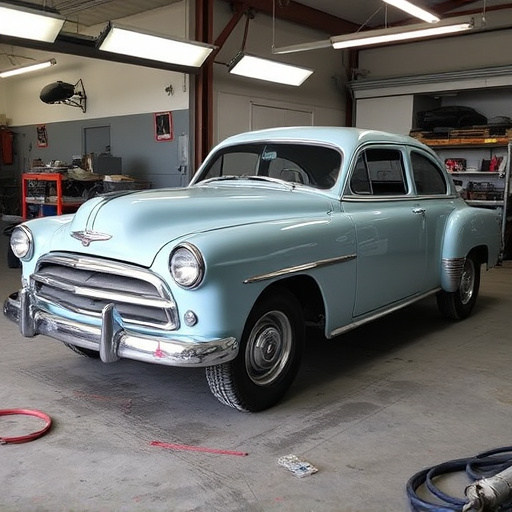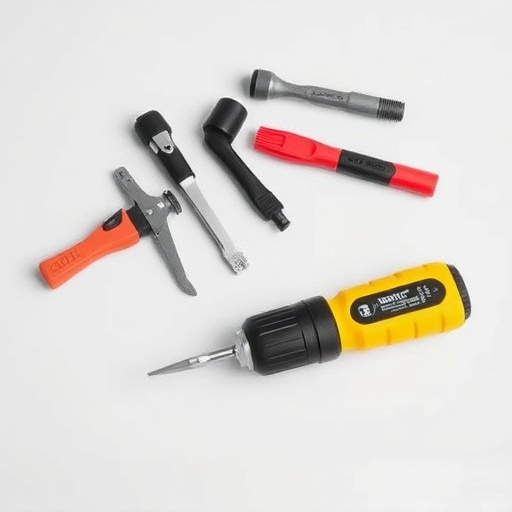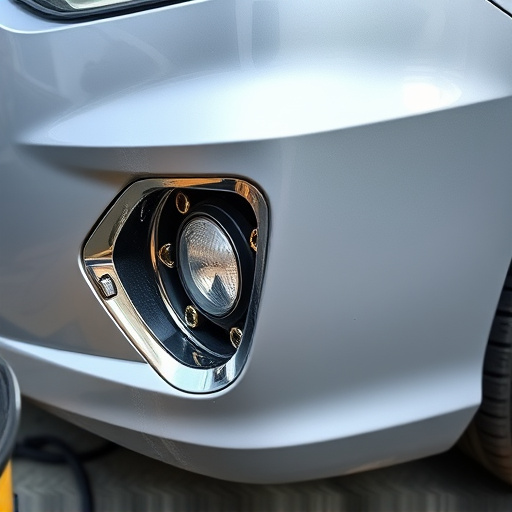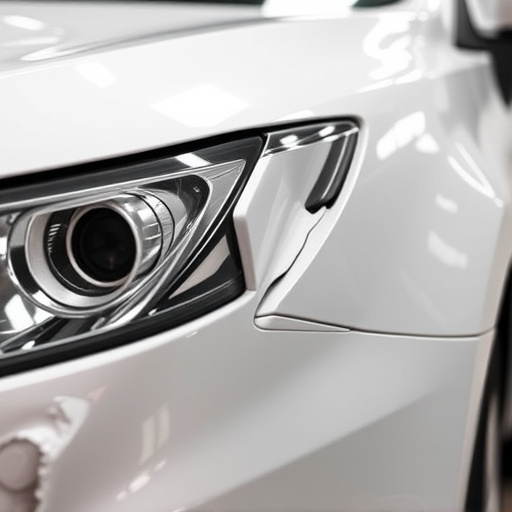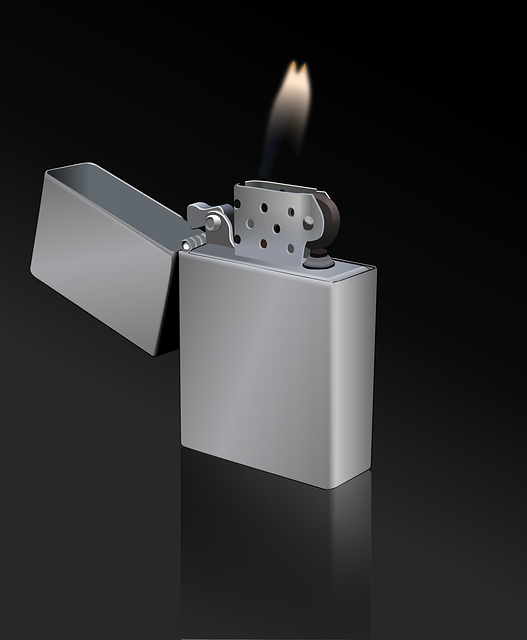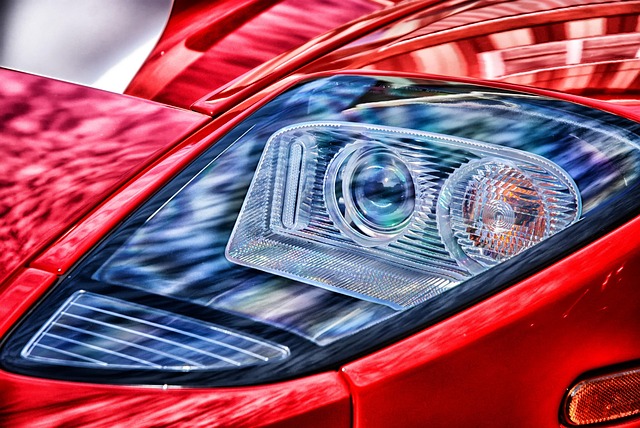Headlight alignment is vital for driver safety and visibility, preventing collisions by reducing blind spots and hazards. Misaligned headlights cause shadows, glare, and reduced perception, increasing accident risk at night or in low-visibility conditions. Regular checks and adjustments are essential practices to maintain optimal safety and prevent costly collision repairs.
Headlight alignment is a critical yet often overlooked aspect of vehicle maintenance. Proper alignment enhances visibility, ensuring drivers can see the road clearly, especially during night driving. It also plays a significant role in safety, as misaligned headlights can cause blinding effects, reduce forward visibility, and increase the risk of collisions. This article explores the basics of headlight alignment, its impact on driver perception, and the potential implications for preventing accidents.
- Understanding Headlight Alignment: The Basics
- Impact on Vehicle Visibility and Driver Perception
- Safety Implications and Potential Collisions Avoidance
Understanding Headlight Alignment: The Basics
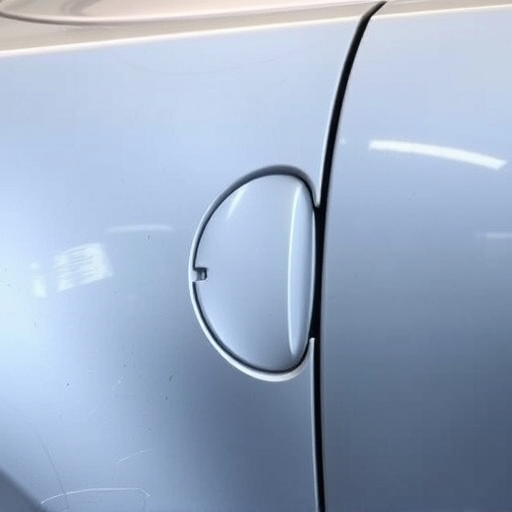
Headlight alignment is a fundamental aspect of vehicle maintenance that significantly impacts driving visibility and safety. Proper alignment ensures that headlights cast light accurately onto the road ahead, illuminating potential hazards and reducing blind spots. Misaligned headlights, on the other hand, can lead to blinding other drivers, causing reduced visibility, and even increasing the risk of collisions.
Imagine a scenario where a driver’s field of vision is obstructed due to incorrect headlight alignment. This could result in late detection of obstacles or changes in road conditions, particularly during low-light or night driving. In severe cases, misaligned headlights can contribute to mercedes benz collision repair needs or even necessitate auto glass replacement at a trusted collision repair center if the incident leads to an accident. Thus, maintaining optimal headlight alignment is paramount for ensuring both personal safety and the overall efficiency of vehicle operations.
Impact on Vehicle Visibility and Driver Perception
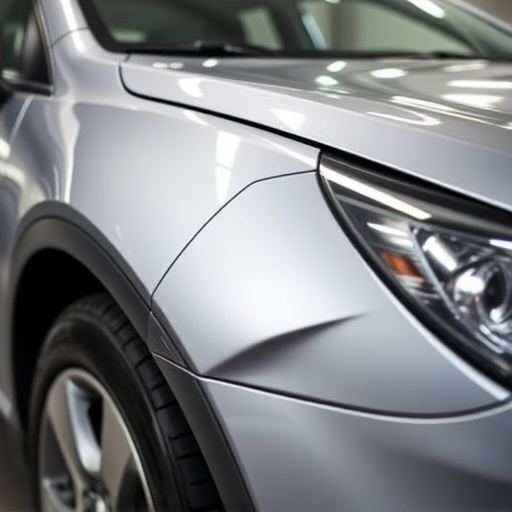
Headlight alignment plays a pivotal role in enhancing or diminishing a driver’s visibility, which directly impacts their perception of the road and potential hazards. When headlights are correctly aligned, they provide optimal illumination, ensuring drivers can clearly see the path ahead, especially during nighttime driving or in low-visibility conditions. This clarity allows for earlier detection of obstacles, such as pedestrians, animals, or other vehicles, giving the driver ample time to react and avoid collisions.
Misaligned headlights, on the other hand, can create blind spots, cast unwanted shadows, or produce glare, all of which negatively affect the driver’s ability to judge distances and perceive the surroundings accurately. Over time, poor headlight alignment can lead to reduced visibility, making it more challenging for drivers to navigate safely, especially in complex driving environments. Therefore, regular checks and vehicle repair services focusing on headlight alignment are essential components of maintaining optimal safety while on the road.
Safety Implications and Potential Collisions Avoidance
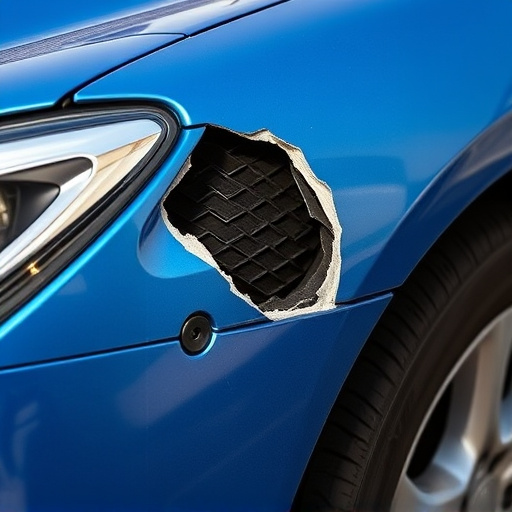
Proper headlight alignment is paramount for ensuring optimal vehicle visibility and safety on the road. Headlights that are misaligned can cast shadows or create blinding effects, hindering a driver’s ability to see clearly at night or in low-visibility conditions. This can significantly increase the risk of accidents, particularly when encountering other vehicles, pedestrians, or obstacles. In fact, studies have shown that incorrect headlight alignment is a contributing factor in many nighttime collisions.
Maintaining proper headlight alignment goes beyond mere visibility; it actively contributes to collision avoidance strategies. When headlights are correctly aligned, they provide adequate illumination of the road ahead and surrounding areas, allowing drivers to detect potential hazards in time for effective braking or evasive maneuvers. Conversely, misaligned headlights can create blind spots that remain unilluminated, leaving drivers vulnerable to unexpected incidents. Regular checks and adjustments of headlight alignment, coupled with timely collision repair or fender repair if necessary, are essential practices for all vehicle owners to uphold safety standards on the road.
Proper headlight alignment is crucial for enhancing vehicle visibility and safety on the road. By ensuring optimal light distribution, drivers can see further and clearer, reducing the risk of head-on collisions. Regular checks and adjustments are essential to maintain this critical system, ultimately fostering a safer driving environment for all.

